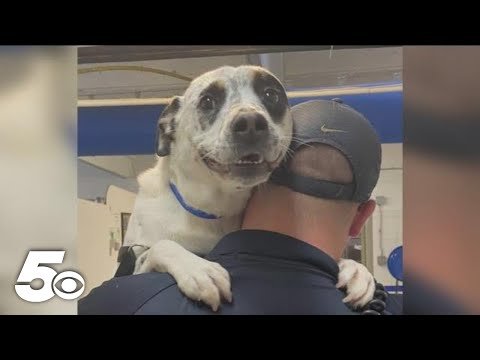As our beloved pets enter their golden years, simple tasks like climbing stairs can become daunting challenges.
Joint stiffness, weakened muscles, and declining vision can transform familiar staircases into obstacles that limit their independence and quality of life.
Many pet parents don’t realize their furry friends are struggling until they notice behavioral changes, like hesitation at the stairs or choosing to sleep downstairs instead of in their usual spots.
Simple Solutions That Make a Big Impact
Transform your home into a senior-friendly haven with these practical modifications. Start by adding non-slip stair treads for better grip and confidence.
Install battery-operated night lights along the stairway to help pets with diminishing eyesight navigate safely after dark.
The key is creating a consistent, well-lit path that helps your pet feel secure during their daily routines.

Motion sensor lights on stairs can be a huge help! Find them here.
Support Options for Different Needs
For pets needing extra assistance, consider installing a gentle-slope ramp alongside indoor stairs. Portable mesh gates can block access to stairs when supervision isn’t possible.
Support slings and harnesses can provide that extra boost of confidence during stair navigation. Remember that each pet is unique – what works for one might not work for another, so be patient in finding the right combination of solutions.
Creating Safe Landing Zones
Place cushioned mats at the top and bottom of stairs to provide joint relief and prevent slipping. Keep these areas clear of clutter to ensure easy navigation and reduce anxiety around stair use.
These landing zones become especially important during winter months when joints may be stiffer or during weather changes that can affect mobility.
Non-slip stair treads work great for wooden stairs find them here!
Monitoring and Maintenance
Regular checks of your modifications ensure they continue to provide safe support. Replace worn stair treads promptly, check that night lights are working, and adjust ramps or supports as your pet’s needs change.
Watch for signs that your pet might need additional help or different solutions.
Conclusion
With thoughtful modifications and patience, we can help our aging companions maintain their independence and dignity.
These simple changes not only improve safety but also strengthen the bond between pets and their families. The joy of seeing a senior pet navigate their home with renewed confidence makes every effort worthwhile.
❤️ Has your senior pet struggled with stairs? Share this guide to help other pet parents give their aging companions the gift of mobility.
Together, we can make every pet’s golden years truly golden. Tag a pet parent who needs to see this!
SHARE now with your friends!


